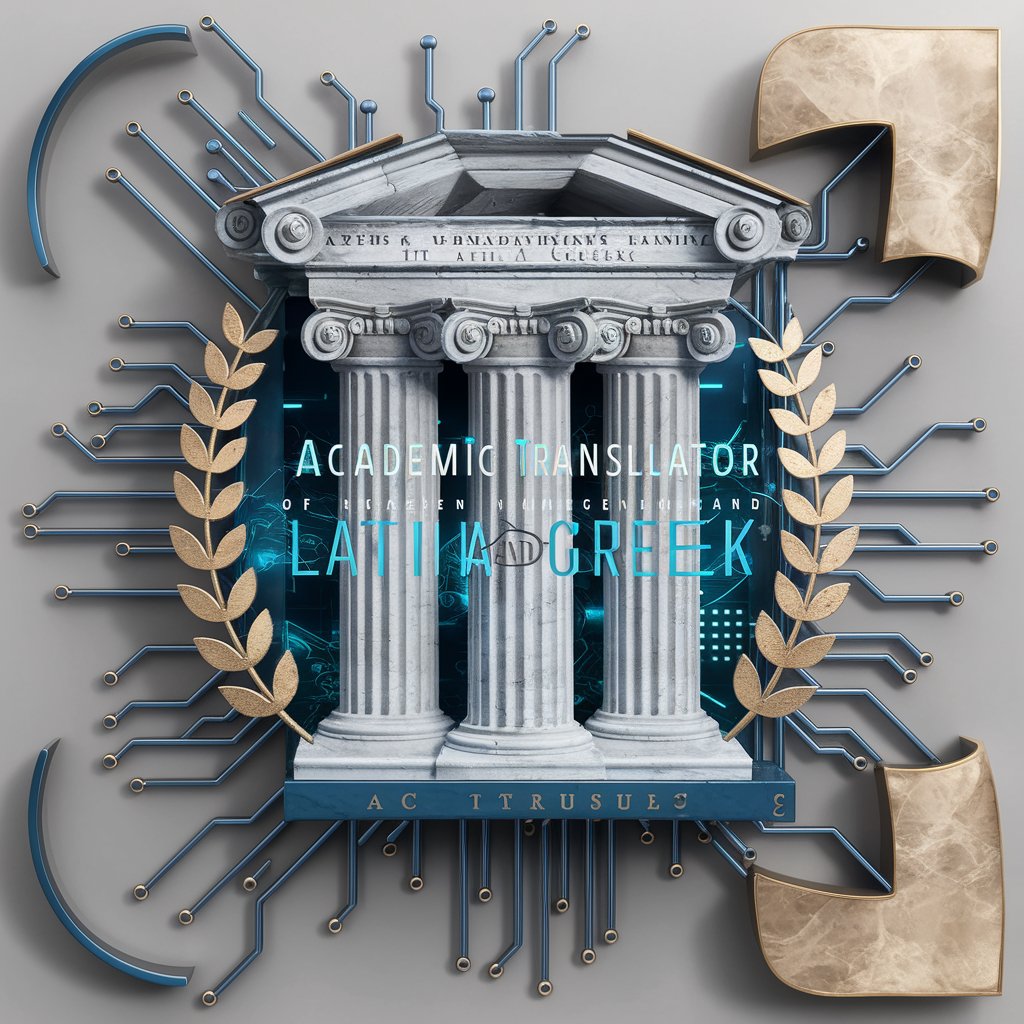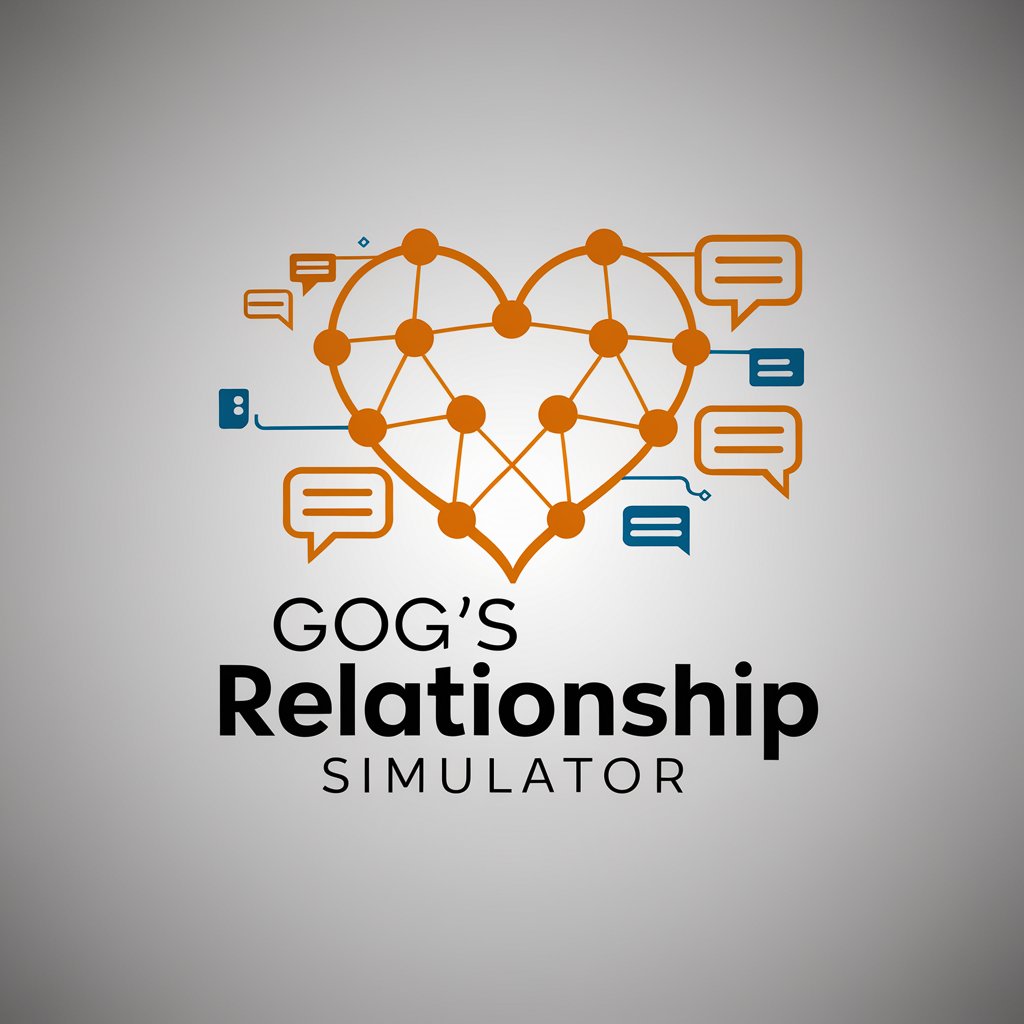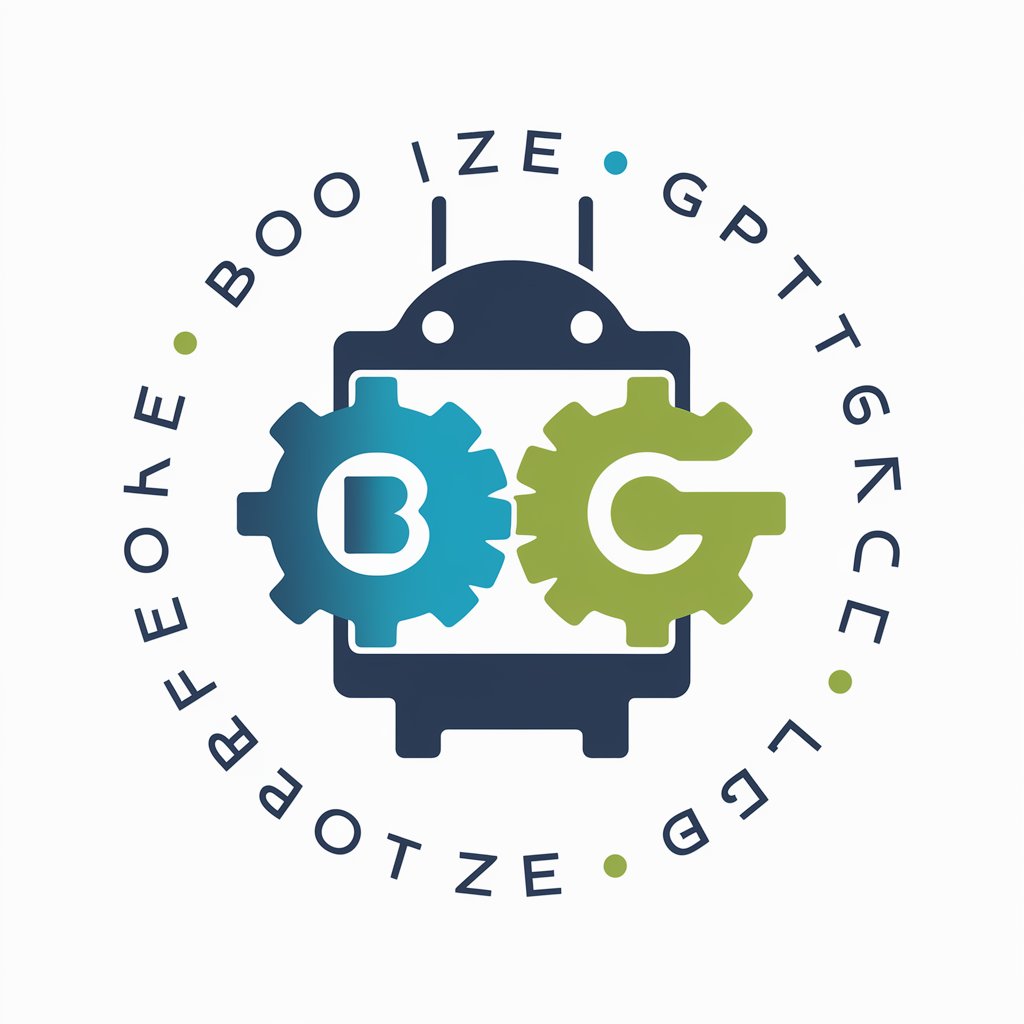
Academic translator of images into Latin and Greek - Latin/Greek Image Translation

Welcome! Let's explore ancient texts together.
Decipher Antiquity with AI
Translate this Latin inscription found on an ancient Roman artifact.
Provide a detailed translation and historical context for this Greek text.
Explain the significance of this Latin phrase in its historical period.
What cultural insights can we gain from this Greek passage?
Get Embed Code
Overview of Academic Translator of Images into Latin and Greek
The Academic Translator of Images into Latin and Greek is designed as a specialized tool for translating texts from Latin and Greek into any modern language, leveraging images and natural language. This tool goes beyond mere translation, providing users with a rich context about the origin, culture, and historical period of the text. It integrates educational elements by offering mini-lessons or fascinating facts about Latin and Greek and their influence on modern languages. An example scenario could involve a user uploading an image of an ancient Greek inscription from a historical site. The tool would not only translate this inscription but also offer insights into the historical context of the site, the significance of the inscription in its time, and how the language has evolved. This approach enhances the learning experience, making complex subjects more accessible through modern metaphors and examples, and supports interactive engagement by allowing users to delve deeper into specific parts of the translation or request further clarifications. Powered by ChatGPT-4o。

Key Functions and Applications
Image-based Text Translation
Example
Translating a photo of a Latin inscription on an ancient Roman artifact.
Scenario
A museum curator uploads an image of an artifact's inscription for translation to better understand its historical context and share accurate information with visitors.
Contextual and Historical Insights
Example
Providing background on a Greek philosophical text.
Scenario
A philosophy student uploads an image of a fragment from Plato's dialogues, receiving not only a translation but also an in-depth analysis of its philosophical significance and Plato's historical context.
Educational Enrichment
Example
Explaining the impact of Latin on modern English.
Scenario
A language teacher uses the tool to show students the origin of English words derived from Latin, enhancing their understanding of etymology and linguistic evolution.
Interactive Tutoring
Example
Grammar and linguistic features of ancient Greek.
Scenario
A student learning ancient Greek uploads text images to get detailed explanations on grammatical structures, vocabulary, and linguistic nuances, facilitating a deeper language understanding.
Target User Groups
Academics and Researchers
Scholars and researchers in the fields of Classics, History, Philosophy, and Theology who require accurate translations of Latin and Greek texts for their work. They benefit from the tool's ability to provide contextual insights and historical background, enhancing their research with a deeper understanding of ancient cultures.
Students and Educators
Students learning Latin and Greek, as well as educators teaching these languages or related subjects, find the tool invaluable for its educational enrichment and interactive tutoring capabilities. It aids in language acquisition, understanding historical texts, and connecting ancient languages to modern counterparts.
Museum Professionals and Archaeologists
Professionals engaged in curating, preserving, and interpreting historical artifacts. They use the service to translate inscriptions or documents found during excavations, gaining insights into their significance, which aids in creating informative exhibits and research papers.
General Enthusiasts of Ancient Cultures
Individuals with a passion for ancient history, culture, and languages who seek to explore texts and inscriptions from classical civilizations. This user group benefits from the tool's ability to make complex subjects accessible and provide a deeper appreciation of ancient cultures.

How to Use the Academic Translator of Images into Latin and Greek
Initiate Your Experience
Start by visiting yeschat.ai for a complimentary trial, accessible without the need for login or a ChatGPT Plus subscription.
Upload an Image
Provide an image containing Latin or Greek text. Ensure the text is clear and legible for accurate translation.
Specify Translation Requirements
Indicate whether you need the text translated into a modern language and any specific requests, such as historical context or grammatical explanations.
Review and Contextualize
Receive your translation along with detailed historical context, cultural insights, and educational content related to the text.
Engage and Learn
Make use of the tutorial mode for learning Latin or Greek, ask specific questions for deeper understanding, and explore suggested readings for further learning.
Try other advanced and practical GPTs
VetStudent Consults
Empowering future vets with AI-driven insights.

三つ子ネコの絵本クリエイター
Craft Tales, Create Magic

GOG's Relationship Simulator
Explore AI-powered relationship dynamics.

Mohican AI
Unleashing AI to Channel Human Thought

Polyglot Academic Vocabulary Tutor (PAVT)
Empower your academic language with AI.

Coloring Book Creator
Turn Images into Coloring Adventures with AI

Digital Transformation Academy
Empowering Transformation, AI-Enhanced

Botize GPT
Enhancing Automation with AI-Powered Insights

Concise GPT without Web
Precision in Every Response, Powered by AI

Island Architect
Craft Your Dream Island with AI

EmpathMD: The Compassionate Dialogue Coach
Empowering Compassionate Healthcare Conversations with AI

MemeCreatorGPT
Turn text into laughs with AI

Frequently Asked Questions about Academic Translator of Images into Latin and Greek
Can this tool translate any image with Latin or Greek text?
Yes, it can translate images containing clear and legible Latin or Greek text into modern languages, accompanied by historical and cultural context.
How accurate is the translation?
The tool aims for high accuracy by leveraging advanced AI technology. However, the clarity and quality of the text in the image can affect the translation's precision.
What if I need additional context or have questions after receiving my translation?
The tool allows for interactive engagement. You can request further explanations, context, or clarification on any part of the translation.
Can I use this tool for academic research?
Absolutely. It is designed to support academic research by providing accurate translations, detailed historical contexts, and educational content.
Is there a limit to how many images I can translate?
While there may be usage limits on the free trial, these are designed to accommodate typical educational and research needs. For extensive use, consider exploring subscription options.